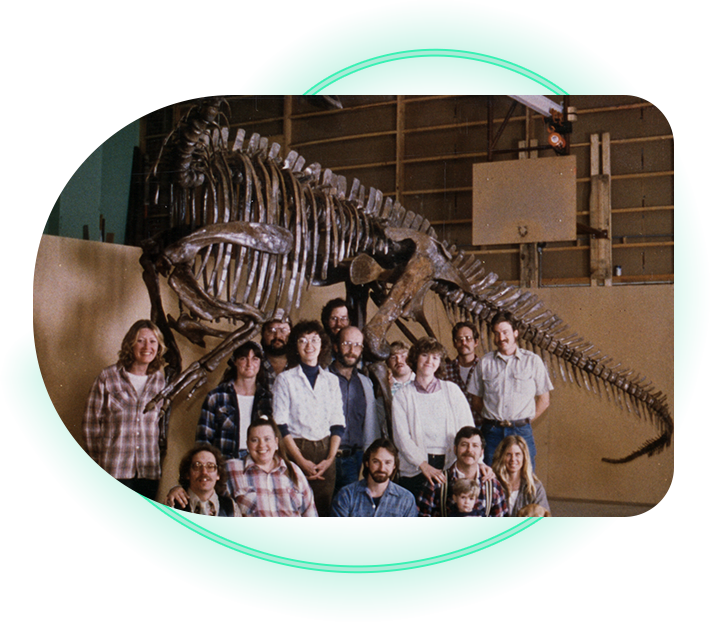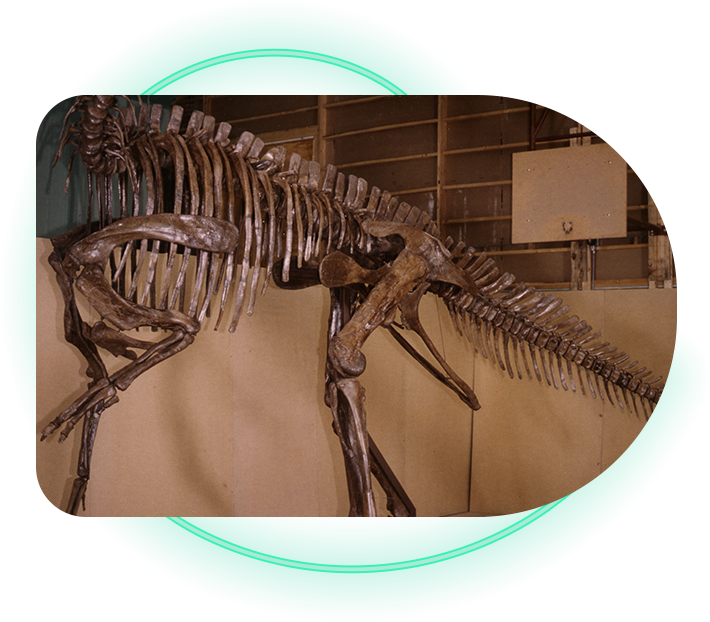Favorite CollLection Triceratops Real Figure Keyring
$11.95

Prey of the dread Tyrannosaurus rex as well as smaller predatory dinosaurs, and other herbivorous, duckbilled dinosaurs were so numerous and traveled in such large herds, that they have been referred to as the “Cattle of the Cretaceous”. Fossil evidence (large bonebeds containing remains of thousands of duckbilled dinosaur skeletons) indicates that large numbers of duckbilled dinosaurs migrated from the North Slope of what is now Alaska to as far south as Mexico, probably following the seasonal vegetation along the shores of the Cretaceous Seaway that stretched from the Gulf of Mexico to the Hudson Bay. From the location of today’s T. rex excavation sites, it is obvious that these terrestrial carnivores inhabited the same geographic area and may have followed the same pattern of migration.
It is very likely that T. rex followed the herds of duckbills, killing and eating the weak and the young in much the same manner as the big carnivorous cats interact with herds of gazelle and pronghorn today. Preserved Tyrannosaurus rex stomach contents of Edmontosaurus bones validate the predator/prey relationship between these two dinosaurs. Raptors were another inhabitant of this same geographic region, and a contemporary of Tyrannosaurus rex,Edmontosaurus, as well as Triceratops. If these smaller but obviously carnivorous predators attacked in groups or packs, as is theorized, they most certainly could have brought down and killed any of these larger dinosaurs.

Black Hills Institute collected for more than a decade from a large bonebed (the Ruth Mason Quarry) containing the remains of literally thousands of Edmontosaurus annectens skeletons.This herd of herbivores suffered a catastrophic event, that killed a large number of individuals very quickly. The presence of bones obviously fed upon by predators after death,and of many broken Nannotyrannus and T. rex teeth at the site, suggests that these skeletons lay unburied for a time. Skeletal disarticulation probably began during this period of predation. However, bone preservation at the site indicates that burial occurred quite soon.Nearly complete skeletal disarticulation eventually took place. Ten composite fossil bone skeletons have been prepared and mounted for museums in Europe, Japan and the United States from this bonebed. More than 350 bones are selected and matched for size to construct one composite skeleton.
At the present time, Black Hills Institute offers both original fossil bone and cast resin skeletons of the Edmontosaurus annectens to its clients. The fossil bone skeletons are between 60% to 70% original bone. Fossil bone skeletons take about one year to complete and cast replicas can be poured and
mounted in four to six months. Individual fossil bones of this dinosaur can also be prepared as small exhibits for the “kid in all of us” to touch. Cast replicas of the skulls, foot assemblies, and dentaries of the Edmontosaurus annectens are also available as individual exhibits and are especially suited for children’s museums and display areas.